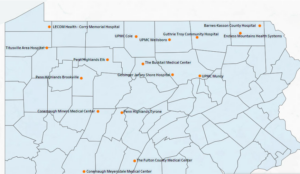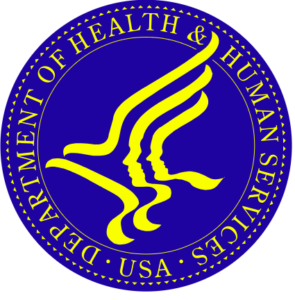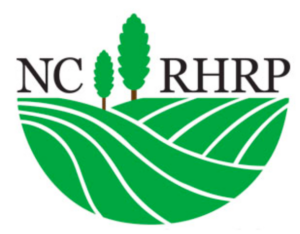- Colorectal Cancer Is Rising among Younger Adults. Some States Want to Boost Awareness.
- Rural Hospitals Built During Baby Boom Now Face Baby Bust
- Food Stamps Go Further in Rural Areas — Until You Add Transportation Costs
- CMS Announces Resources and Flexibilities to Assist with the Public Health Emergency in the State of Texas
- CMS Proposes New Payments for Digital Health Under CY2025 PFS Draft Rule
- Improving Public Health by Strengthening Community Infrastructure
- Biden Harris Administration Proposes Policies to Reduce Maternal Mortality, Advance Health Equity, and Support Underserved Communities
- Nearly Half of U.S. Counties Don't Have a Single Cardiologist
- Randolph County, Ill. Turns Unused Part of Nursing Home Into State-Of-The-Art Behavioral Health Center
- Safe and Stable Housing Is a Foundation of Successful Recovery
- Rural RPM Program Is a Lifeline for Pregnant Women
- Expert: Rural Hospitals Are Particularly Vulnerable to Increasing Cyberattacks Targeting Healthcare Facilities
- Biden-Harris Administration Invests Over $200 Million to Help Primary Care Doctors, Nurses, and Other Health Care Providers Improve Care for Older Adults
- AJPH Call for Papers Special Section on Intersections of Public Health And Primary Care
- NIH HEAL Initiative Turns Attention to Pragmatic Trials in Rural Communities
Overdose Deaths Are in Decline

Last week, the Centers for Disease Control and Prevention released provisional data from their National Center for Health Statistics (NCHS) indicating an estimated 107,543 drug overdose deaths in the United States in 2023 – a decrease of 3 percent from the 111,029 deaths estimated in 2022. This is the first annual decrease in drug overdose deaths since 2018. Several states across the nation saw decreases; Nebraska, Kansas, Indiana, and Maine experienced declines of 15 percent or more. Still, some states saw increases. Alaska, Washington, and Oregon stood out with notable increases of at least 27% compared to the same period in 2022. Various factors make a difference in provisional counts versus final counts, such as records indicating “pending investigation.” The data are based on death records NCHS receives each month from state vital registration offices with no distinction between urban and rural.
Coming Soon: Available Funding for Enhancing The Nurse Education, Practice, Quality and Retention – Workforce Expansion Program

HRSA’s Bureau of Health Workforce has dedicated $4.75 million to this program to increase the nursing workforce in rural (non-metro) and underserved areas to address the critical shortage of nurses, specifically in acute and long-term care settings. Eligible applicants include: public and private institutions of higher education; accredited schools of nursing; health care facilities; entities that confer associate’s degrees in nursing, such as community colleges; and partnerships between training and health care facilities. This is a forecasted opportunity and may change when the application opens.
“Economic Development Drives Population Health”: A New Vision for Rural Hospital Leadership

A new feature article in The Rural Monitor describes the role that rural hospital investments can play in contributing to community health. The story details a Critical Access Hospital in Wisconsin making infrastructure investments in their downtown and a New Hampshire medical center investing in public transit and affordable housing.
Breaking Down U.S. Debt Trends to the Neighborhood Level

The updated Consumer Credit Explorer offers an easy way to visualize trends in U.S. consumer debt at the national, state, and even regional level. What’s new? The go-to resource from the Federal Reserve Bank of Philadelphia has been enhanced with data through Q4 2023. You can also now compare trends in up to two U.S. regions, up to two debt or credit characteristics, and up to two borrower or neighborhood demographics at once.
The tool allows you to see overall debt and types of debt, broken down by borrower age or credit score type, neighborhood income level or majority race/ethnicity, and much more, providing a unique view into household financial well-being.
Developing Occupational Therapy and Telehealth Toolkit

Occupational Therapy and Telehealth Toolkit. Created by the Greater Plains Telehealth Resource and Assistance Center, the toolkit gives information on basics and best practices for providing occupational therapy via telehealth.
Understanding HRSA Modifications to the Definition of Rural for FORHP Grants
 – Comment by May 28. On April 26th, the Federal Office of Rural Health Policy (FORHP) announced a proposed modification to the definition of ‘rural’ used to designate eligible areas for rural health grants. Because access to needed health care is likely to be reduced when roads are most difficult to traverse, FORHP proposes to modify the definition of rural areas by integrating the new Road Ruggedness Scale (RRS) released in 2023 by the Economic Research Service (ERS) of the U.S. Department of Agriculture. The proposed modifications are based on a data-driven methodology to identify areas with difficult mountainous terrain. All areas included in the current definition of rural would remain included.
– Comment by May 28. On April 26th, the Federal Office of Rural Health Policy (FORHP) announced a proposed modification to the definition of ‘rural’ used to designate eligible areas for rural health grants. Because access to needed health care is likely to be reduced when roads are most difficult to traverse, FORHP proposes to modify the definition of rural areas by integrating the new Road Ruggedness Scale (RRS) released in 2023 by the Economic Research Service (ERS) of the U.S. Department of Agriculture. The proposed modifications are based on a data-driven methodology to identify areas with difficult mountainous terrain. All areas included in the current definition of rural would remain included.
HHS Releases Nondiscrimination in Health Program and Activities Final Rule

Effective May 6. The U.S. Department of Health and Human Services (HHS) Office of Civil Rights issued a final rule under Section 1557 of the Affordable Care Act advancing protections against discrimination in health care. At a minimum, the rule will restore protections against discrimination on the basis of race, color, national origin, sex, age, and disability. It will also reduce language access barriers, expand physical and digital accessibility, and address bias in health technology. With the restoration of the rule, HHS aims to increase meaningful access to health care for communities across the United States.
Navigating the Application Guide for HRSA Rural Healthcare Provider Transition Project

-Apply by August 15. Five small rural hospitals and certified Rural Health Clinics will be selected to receive one year of focused, virtual technical assistance designed to strengthen their organization’s understanding of the key elements of value-based care. Project focus areas include quality, efficiency, patient experience, and safety. Details on the application process can be found in the 2024-2025 Application Interview and Process Guide. Selected applicants will be notified in September, and project activities begin in October 2024.
Using the Updated Financial Distress Index to Describe Relative Risk of Hospital Financial Distress

Researchers at the North Carolina Rural Health Research and Policy Analysis used a recent revision of the Financial Distress Index (FDI) model to describe the relative risk of experiencing financial distress for rural hospitals and selected urban hospitals. Among the findings: over 60 percent of hospitals at highest relative risk of financial distress are in seven states: Texas, Oklahoma, Tennessee, Alabama, Kansas, Mississippi, and Georgia.
Research Demonstrates Non-Urgent Use of Emergency Departments by Rural and Urban Adults
 Among findings from the Maine Rural Health Research Center: rural adults aged 18-64 are more likely than their urban counterparts to visit the emergency department in a given year; socio-demographics associated with higher rates of non-urgent ED use by rural residents include younger age, fair or poor mental and physical health, low income, public insurance coverage, and lower access to primary care.
Among findings from the Maine Rural Health Research Center: rural adults aged 18-64 are more likely than their urban counterparts to visit the emergency department in a given year; socio-demographics associated with higher rates of non-urgent ED use by rural residents include younger age, fair or poor mental and physical health, low income, public insurance coverage, and lower access to primary care.
